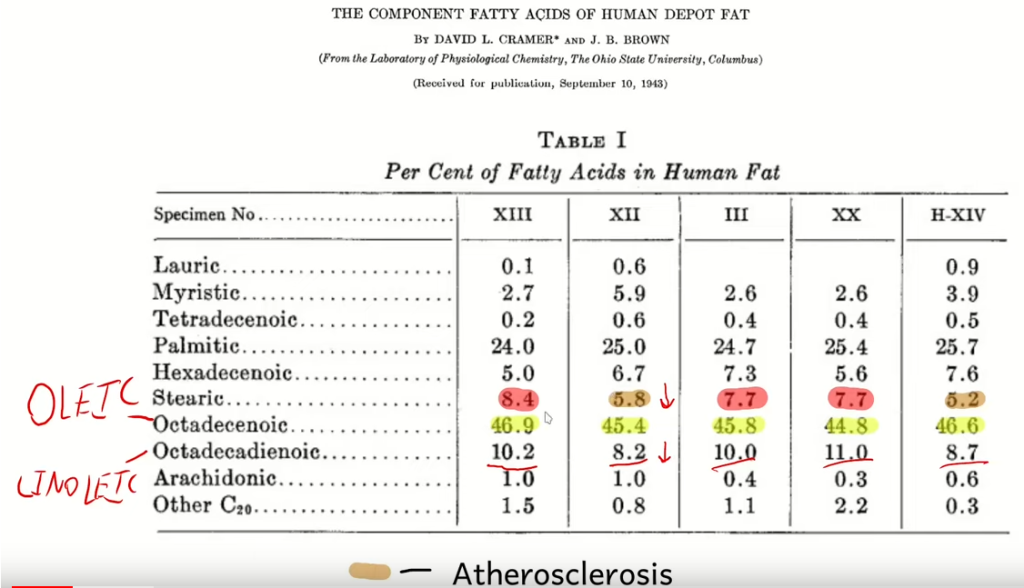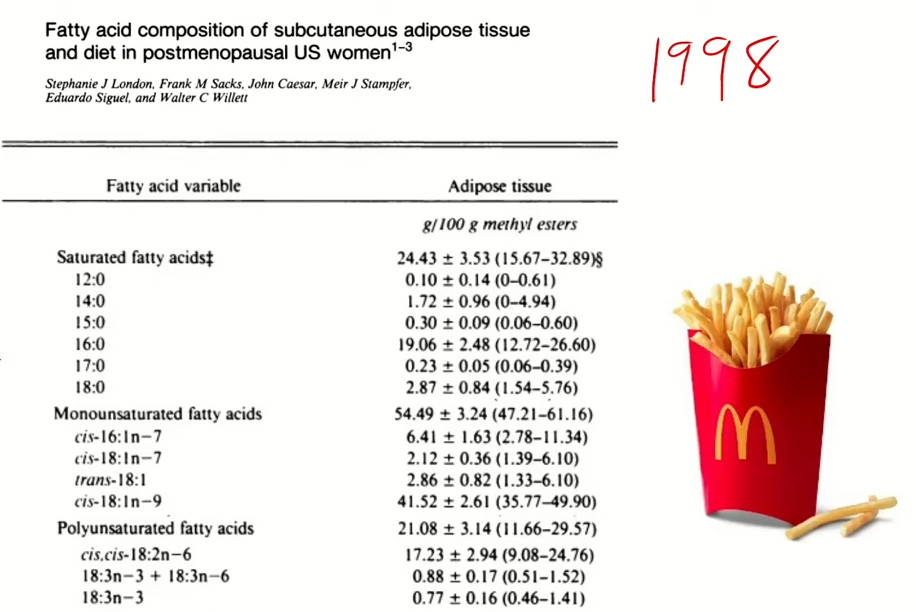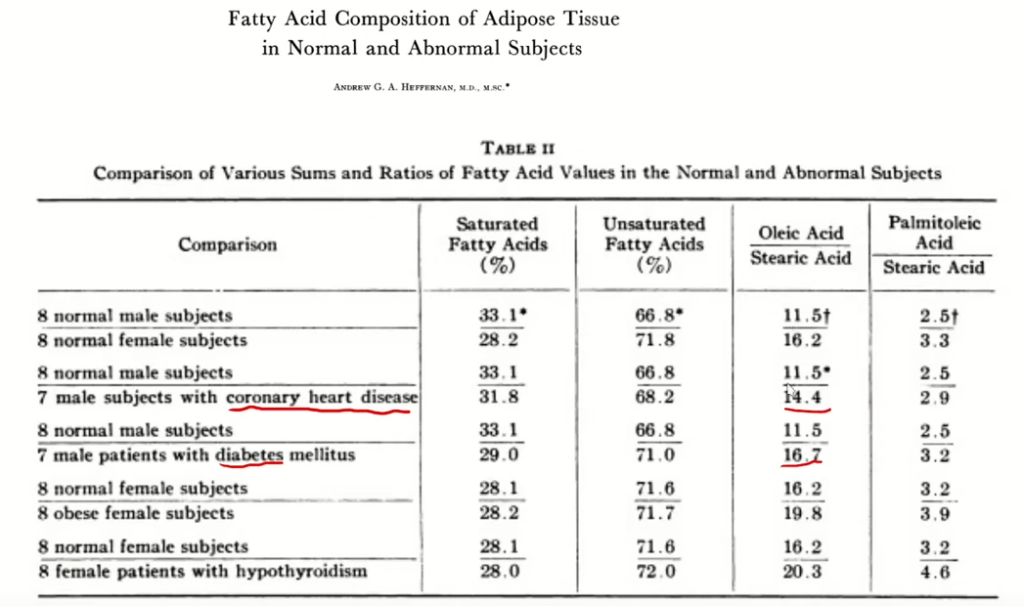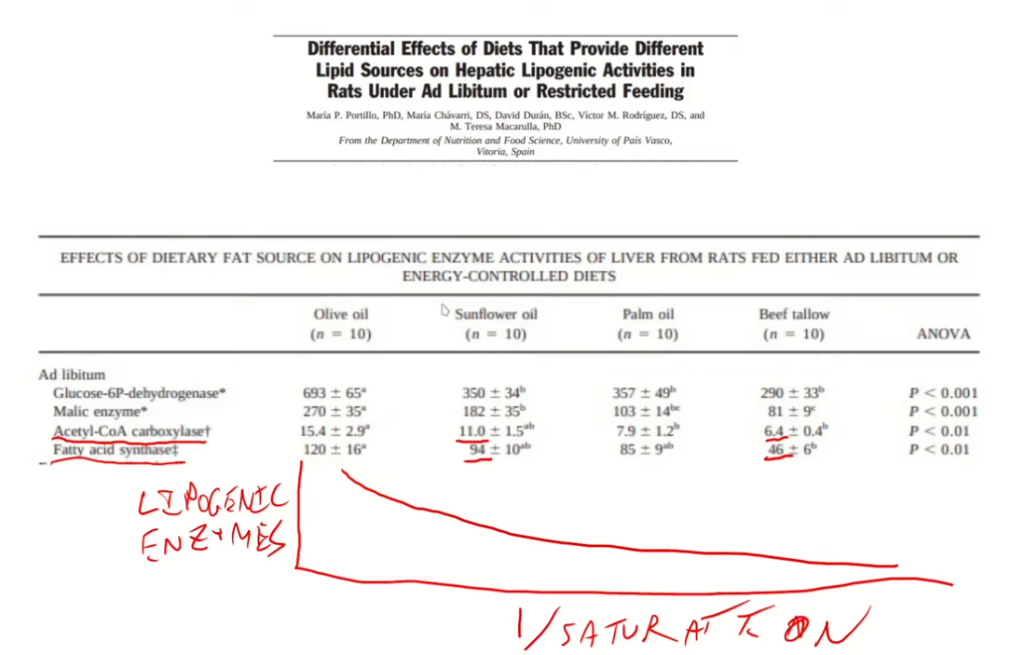This is a summary of the latest video:
We are not made the same as we used to be. The bodyfat composition of Americans has shifted dramatically over the past 80 years. The first solid data that we have was published in 1943.

In 1943, American bodyfat was approximately 36% saturated, 43% monounsaturated and 10% PUFA. The desaturase index (DI18) – the ratio of oleic acid (18:1) to stearic acid (18:0) – was 6.6. By 1998, those ratios shifted to 24/55/21 and 16.2.

All the way back in 1964, it was reported that the desaturase index was increased in heart disease and obesity in a British study. The British popultaion had a higher desaturase index at that time than has been reported elsewhere:

Body fat composition is determined by a combination of factors: your diet and your enzymes. The lipogenic (“fat making”) enzymes create saturated fat from other energy sources. This saturated fat can then be converted to oleic acid by a lipogenic enzyme called SCD-1. When lipogenic enzyme expression is very high, oleic acid levels rise. There is a positive feedback loop where dietary unsaturated fats cause lipogenic enzymes to become upregulated leading to lower saturated fat and higher MUFA. The highly unsaturated body fat then leads to continual upregulation of lipogenic enzymes. This can be shown using rats in the lab:

This has led to a situation where an increase in dietary PUFA has led to an increase in lipogenic enzymes. Those lipogenic enzymes favor the production of MUFA. This means that as the PUFA content of our body fat has increased, saturated fat has dropped and MUFA levels have remained mostly constant. If you add together the three 18:1 isoforms (different versions of oleic acid) from the 1998 study, oleic acid is actually a bit higher than that reported in 1943.
For 80 years, levels of MUFA and PUFA have risen compared to SFA.

Very interesting!
What would be a good and exceptional target benchmark for SF/MUFA/PUFA Ratio & Oleic/Stearic Ratio?
Best